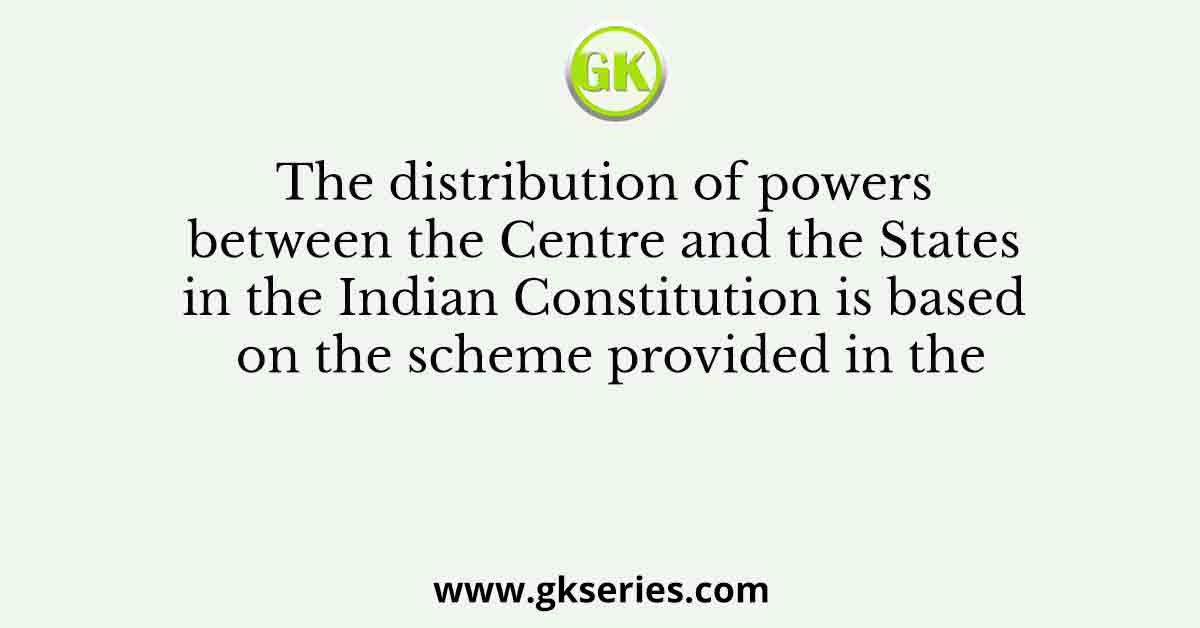
Q. The distribution of powers between the Centre and the States in the Indian Constitution is based on the scheme provided in the
(a) Morley-Minto reforms 1909
(b) Montagu-Chelmsford Act 1919
(c) Government of India Act, 1935
(d) Indian Independence Act 1947
Ans: (c) Government of India Act, 1935
Explanation: The correct answer is (c) Government of India Act, 1935.
The distribution of powers between the Centre (Union Government) and the States in the Indian Constitution is primarily based on the scheme provided in the Government of India Act, 1935. The Government of India Act, 1935, was a significant piece of legislation passed by the British Parliament, which served as the constitutional framework for British India until the adoption of the Indian Constitution in 1950.
The Government of India Act, 1935, introduced a federal system of government in India and outlined the powers and responsibilities of the federal (Central) government and the provincial (State) governments. It established a three-tiered structure with the federal government at the center, provincial governments in the states, and local governments at the district level. The act defined the legislative, executive, and financial powers of both the Centre and the States and established a system of division of powers between them.
While the Indian Constitution adopted in 1950 made several modifications and adaptations to the distribution of powers, the basic framework and principles of the federal structure were derived from the Government of India Act, 1935.





